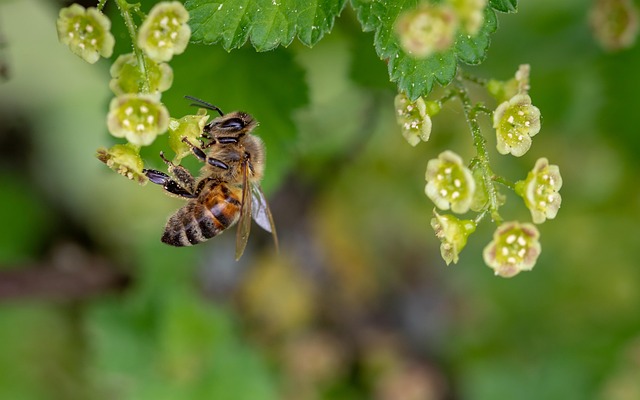Ant infestations pose significant risks to residential and commercial properties, impacting their value and condition. Professional evaluators use advanced tools like scent detection dogs, infrared cameras, and moisture meters for thorough inspections, detecting hidden nests, trails, and damage. They identify ant species for targeted treatment and offer guidance on prevention, including sealing entry points, regular inspections, cleanliness, quick leak repair, and exterior landscape maintenance.
Professional evaluations of residential and commercial properties are essential, especially when it comes to ant infestation inspections. This article delves into the critical role professionals play in identifying and assessing ant infestations, using advanced methods and tools for accurate detection. We explore preventive measures and post-inspection recommendations to help property owners maintain pest-free environments. Understanding these processes is crucial for anyone looking to protect their investment and ensure a safe living or working space.
Understanding Ant Infestation Inspections: A Crucial Step in Property Evaluation
Ant infestations can significantly impact the value and condition of both residential and commercial properties, making them a crucial consideration during professional property evaluations. A thorough ant infestation inspection is an essential step in assessing any building’s overall health and marketability. These inspections go beyond merely identifying visible ant activity; they involve a detailed examination of potential entry points, damage caused by ants, and the extent of their presence within wall voids, floors, and other hard-to-reach areas.
During such an inspection, professionals use advanced tools and techniques to detect even the subtlest signs of ant infestation. This includes visualizing ant trails, identifying worker ants, locating nests, and assessing structural vulnerabilities that may facilitate future invasions. By addressing these issues proactively, property evaluators can ensure higher accuracy in their assessments, mitigate potential financial losses for buyers or sellers, and contribute to maintaining a healthy and pest-free environment within the property.
The Role of Professionals in Identifying and Assessing Ant Infestations
Professional evaluators play a crucial role in identifying and assessing ant infestations, especially in residential and commercial properties. During an ant infestation inspection, experts employ specialized knowledge and tools to detect signs of ant activity, such as trails, nests, or damage caused by ants. They meticulously inspect various areas, including walls, floors, ceilings, and outdoor spaces, to pinpoint the extent and type of infestation.
These professionals use advanced techniques like visual inspections, scent trail tracking, and moisture detection to uncover hidden ant colonies. Their expertise enables them to differentiate between common ant species, as each has distinct behaviors and preferences, impacting the chosen treatment methods. By conducting thorough ant infestation inspections, they help property owners and managers take proactive measures to eliminate infestations, prevent further damage, and ensure a safe living or working environment.
Methods and Tools Used for Effective Ant Infestation Inspection
Professionals conducting ant infestation inspections employ a multitude of methods and tools to ensure thoroughness and accuracy. These include visual examinations, where experts carefully inspect accessible areas for signs of ant activity like trails, nests, or damage. They also utilize scent trails and pheromone-based detection dogs, which have an exceptional ability to locate hidden infestations by following the distinct chemical signals ants leave behind.
Additionally, advanced tools such as infrared cameras, thermal imaging, and digital moisture meters are deployed. These technologies help identify warm areas indicative of ant nests or moisture levels that can attract ants. Samples may be collected and analyzed in laboratories for species identification and to assess the extent of the infestation, guiding effective treatment strategies tailored to specific ant species and their behaviors.
Preventive Measures and Post-Inspection Recommendations for Property Owners
After a comprehensive property evaluation, professional inspectors often provide crucial insights and recommendations for property owners to maintain their spaces. Among common concerns, ant infestation is a significant issue that requires proactive measures. Post-inspection, homeowners should be advised to seal entry points, especially around pipes, windows, and doors, as these are primary routes for ants. Regular inspections are recommended to identify any early signs of infestations, making it easier and less costly to address the problem.
Additionally, property owners can enhance prevention by maintaining cleanliness, promptly addressing leaks, and storing food in airtight containers. Keeping the exterior of the property well-maintained, including trimming trees and shrubs away from walls, further discourages ant activity. These simple yet effective steps, coupled with professional insights, empower homeowners to protect their investments and create a barrier against potential ant infestations.
Professional evaluations of ant infestation inspections are essential steps in accurately assessing property conditions. By employing specialized tools and expertise, professionals can identify, assess, and mitigate ant issues, providing critical insights for both residential and commercial property owners. These inspections not only safeguard properties but also offer valuable guidance on preventive measures, ensuring a comfortable and secure living or working environment. Implementing post-inspection recommendations can significantly reduce the risk of future ant infestations, making it an indispensable practice in maintaining optimal property conditions.
